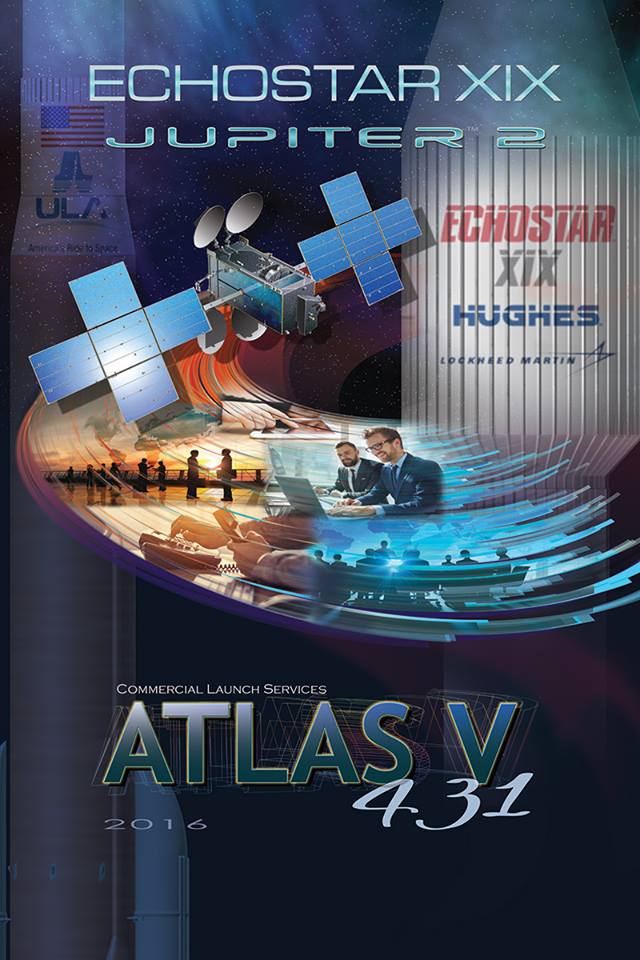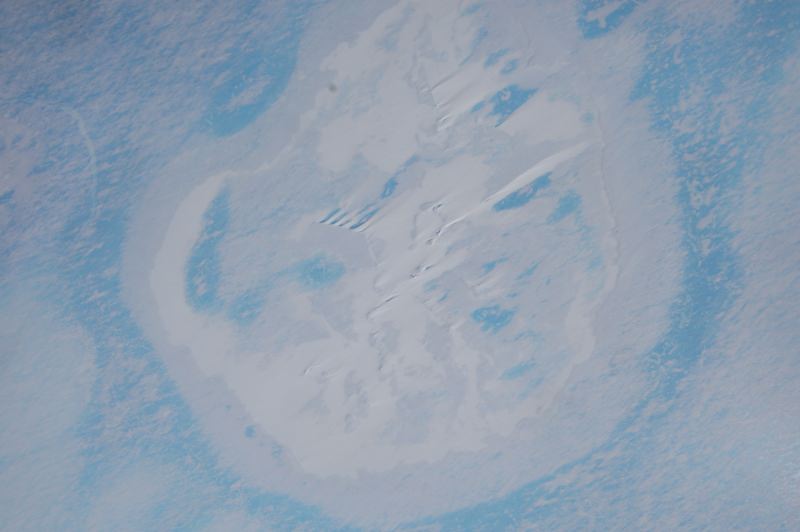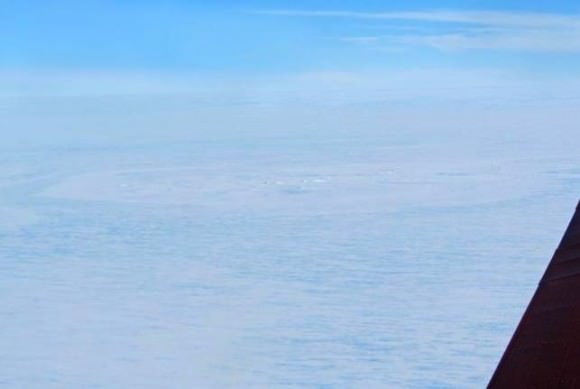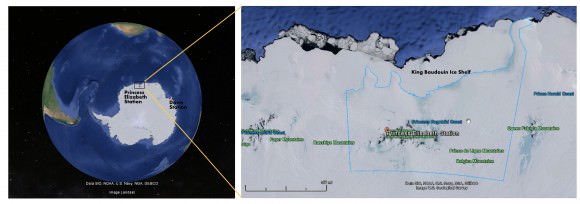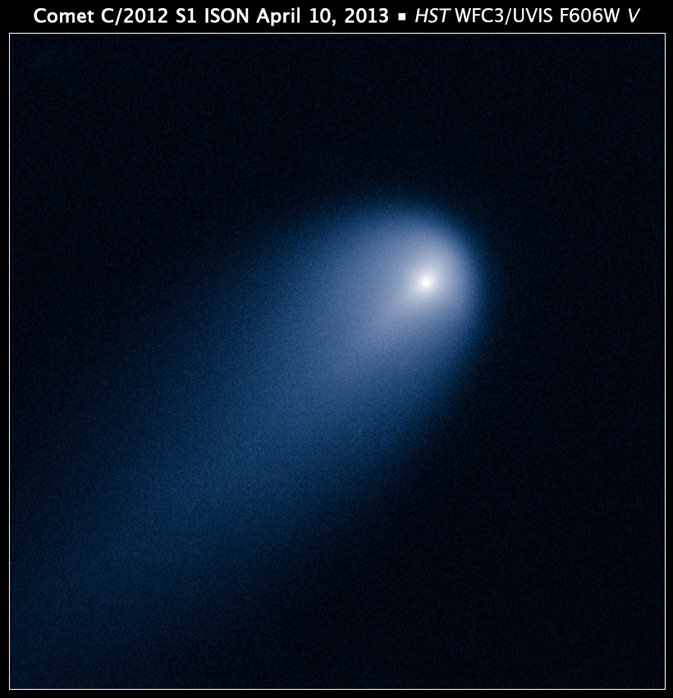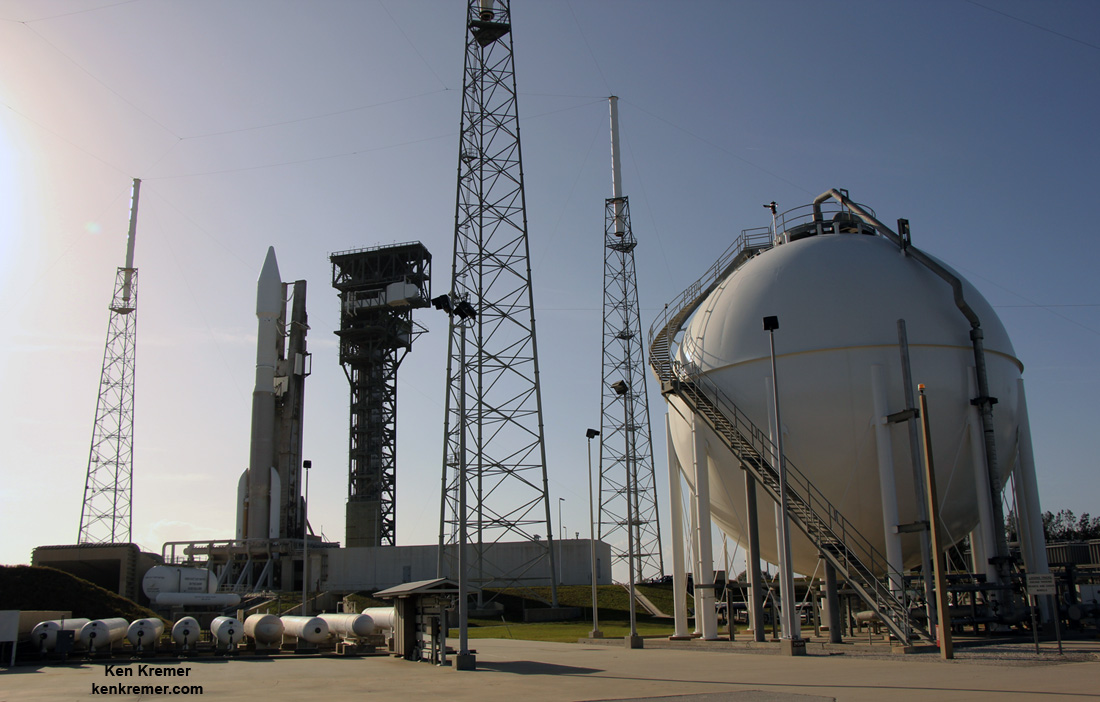
CAPE CANAVERAL AIR FORCE STATION, FL – The highest capacity satellite delivering high speed internet to homes and businesses in North America is scheduled for an early afternoon blastoff on a mighty ULA Atlas V on Sunday, Dec. 18, from the Florida Space Coast.
The lunchtime liftoff should thrill spectators since the venerable United Launch Alliance Atlas V booster carrying EchoStar 19 to orbit is equipped with a trio of solid rocket boosters making for a highly visible plume trailing behind all the way to geosynchronous orbit – weather permitting of course.
“EchoStar XIX will be the world’s highest capacity broadband satellite in orbit, dramatically increasing capacity for HughesNet® high-speed satellite Internet service to homes and businesses in North America,” according to ULA.
Also known as Jupiter 2, it will deliver more speed, more data and more advanced features to consumers and small businesses from coast to coast, says EchoStar.
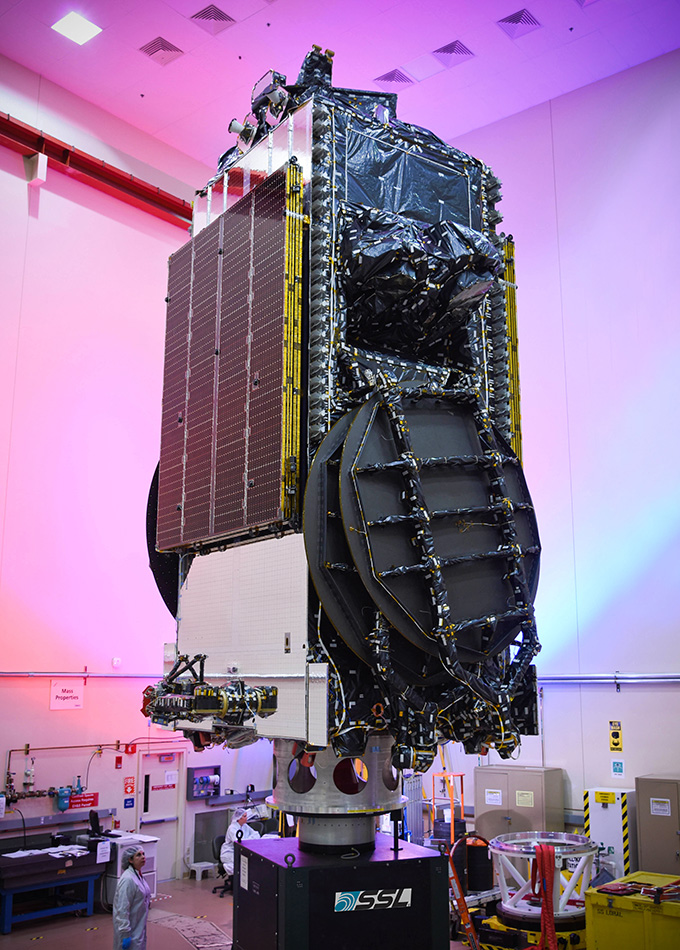
The ULA Atlas V was rolled out to the launch pad this morning ahead of tomorrows launch of the EchoStar XIX mission for Hughes from Space Launch Complex (SLC)-41 at Cape Canaveral Air Force Station, Florida, on Sunday, Dec. 18, 2016.
The launch window opens at 1:27 p.m. EST.
The launch window extends for two hours from 1:27 to 3:37 p.m. EST.
You can watch the Atlas launch live via a ULA webcast. The live launch broadcast will begin about 20 minutes before the planned liftoff at 1:07 p.m. EST here:
www.ulalaunch.com and www.youtube.com/unitedlaunchalliance
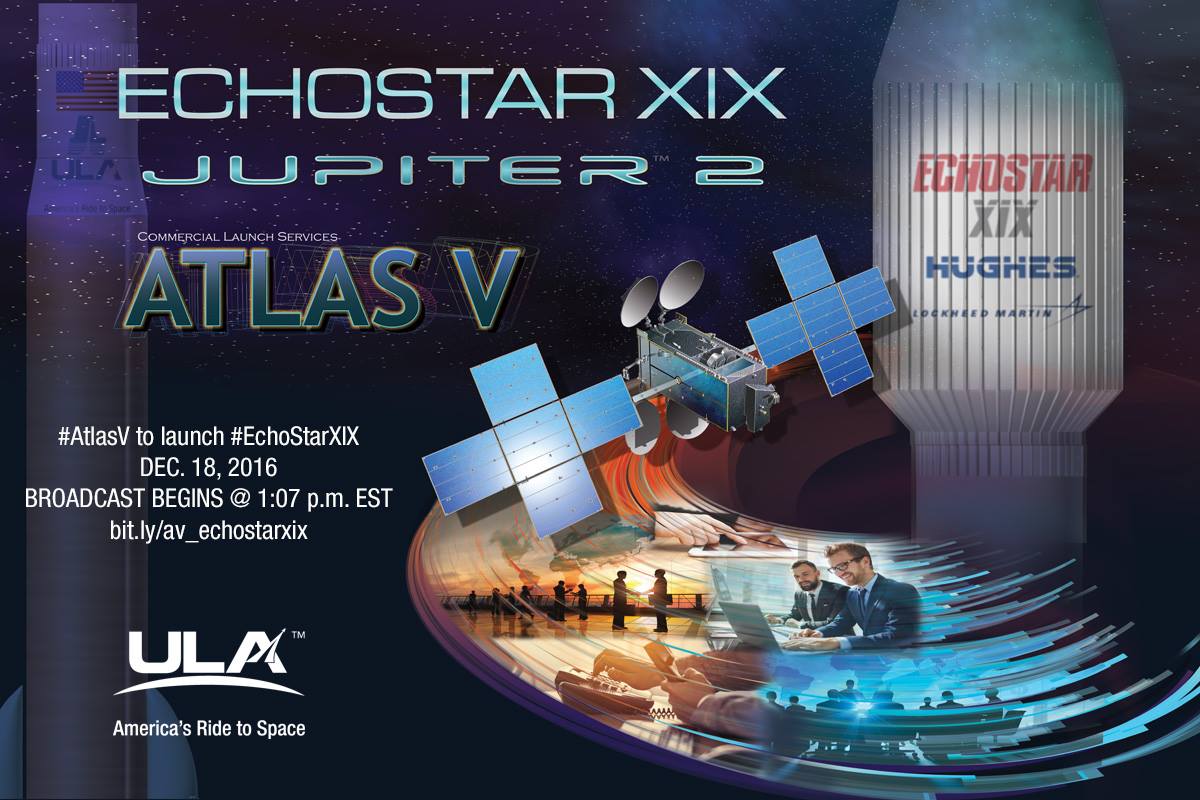
Because of the added solids, the soar to space should be spectacular for locals and tourists gathering from around the world to view the launch now slated for just a day away.
And since the liftoff is taking place on a weekend at lunchtime, that makes it perfectly convenient for a family outing in the sunshine state amidst this Christmas holiday season – which is currently sunny!!
The weather forecast for Sunday, Dec. 18, calls for a 70 percent chance of acceptable weather conditions at launch time.
The primary concerns are for thick clouds and cumlulus clouds.
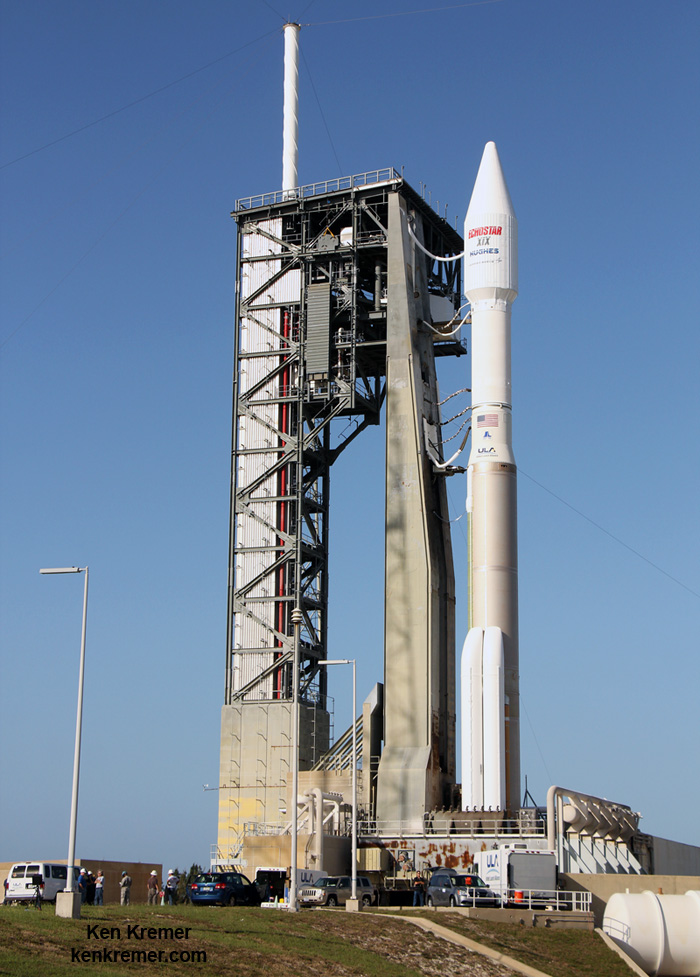
EchoStar 19 will be delivered to a geosynchronous transfer orbit (GTO) atop the United Launch Alliance Atlas V booster.
It will be stationed at 97.1 degrees West longitude.
EchoStar 19 was built by Space Systems Loral (SSL) and is based on the powerful SSL 1300 platform as a multi-spot beam Ka-band satellite.
It is upgraded from the prior series version.
“Building from their experience on the highly successful EchoStar XVII broadband satellite, SSL and Hughes collaboratively engineered the specific design details of this payload for optimum performance.”
The 194-foot-tall commercial Atlas V booster will launch in the 431 rocket configuration with three solid rocket motors attached to augment the first stage thrust of approximately 2 million pounds.
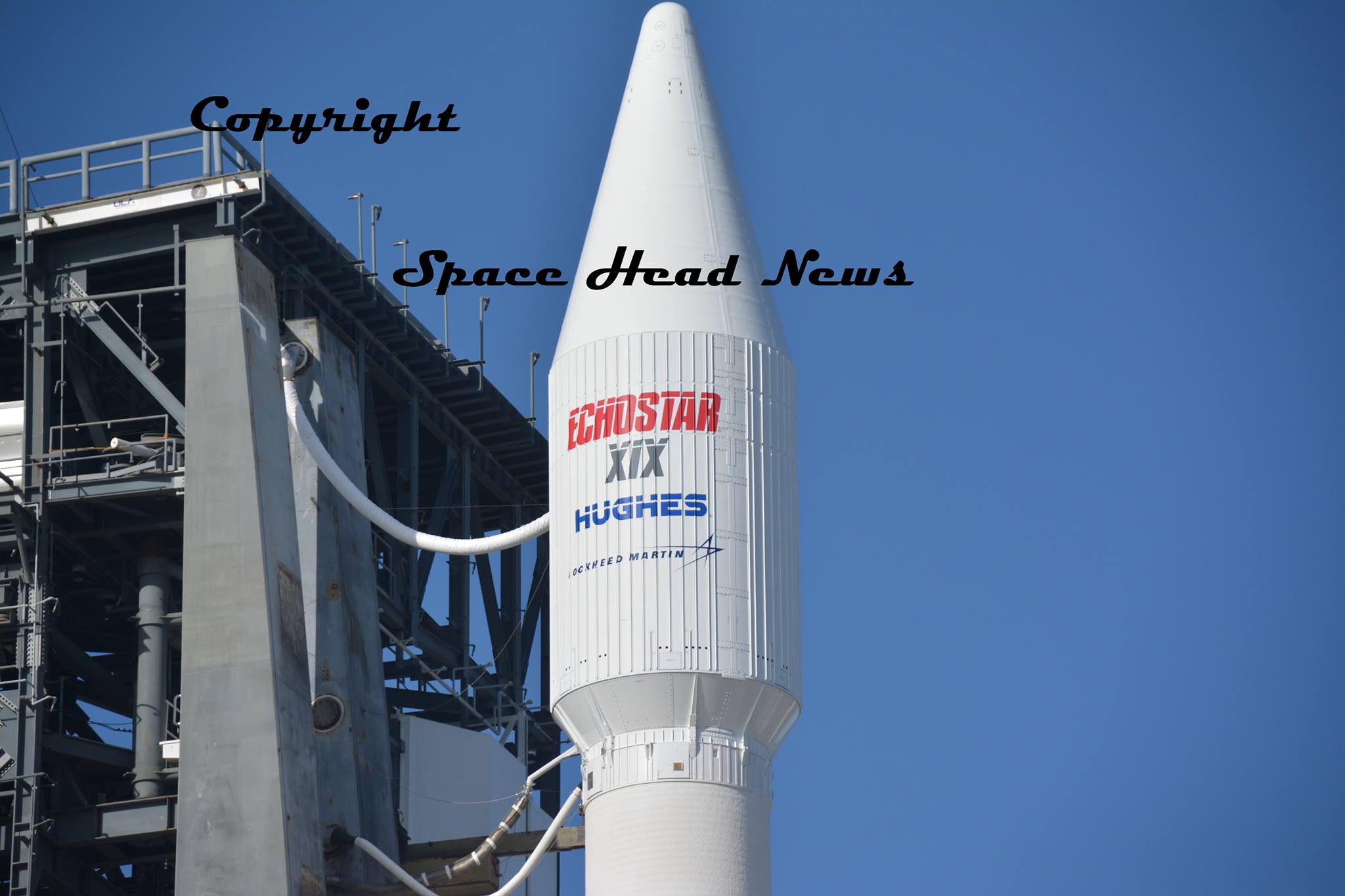
Stay tuned here for Ken’s continuing Earth and Planetary science and human spaceflight news.
………….
Learn more about ULA Atlas V EchoStar 19 comsat launch, GOES-R launch, Heroes and Legends at KSCVC, OSIRIS-REx, InSight Mars lander, ULA, SpaceX and Orbital ATK missions, Juno at Jupiter, SpaceX AMOS-6 & CRS-9 rocket launch, ISS, ULA Atlas and Delta rockets, Orbital ATK Cygnus, Boeing, Space Taxis, Mars rovers, Orion, SLS, Antares, NASA missions and more at Ken’s upcoming outreach events:
Dec. 16-18: “ULA Atlas V EchoStar 19 comsat launch,GOES-R weather satellite launch, OSIRIS-Rex, SpaceX and Orbital ATK missions to the ISS, Juno at Jupiter, ULA Delta 4 Heavy spy satellite, SLS, Orion, Commercial crew, Curiosity explores Mars, Pluto and more,” Kennedy Space Center Quality Inn, Titusville, FL, evenings
